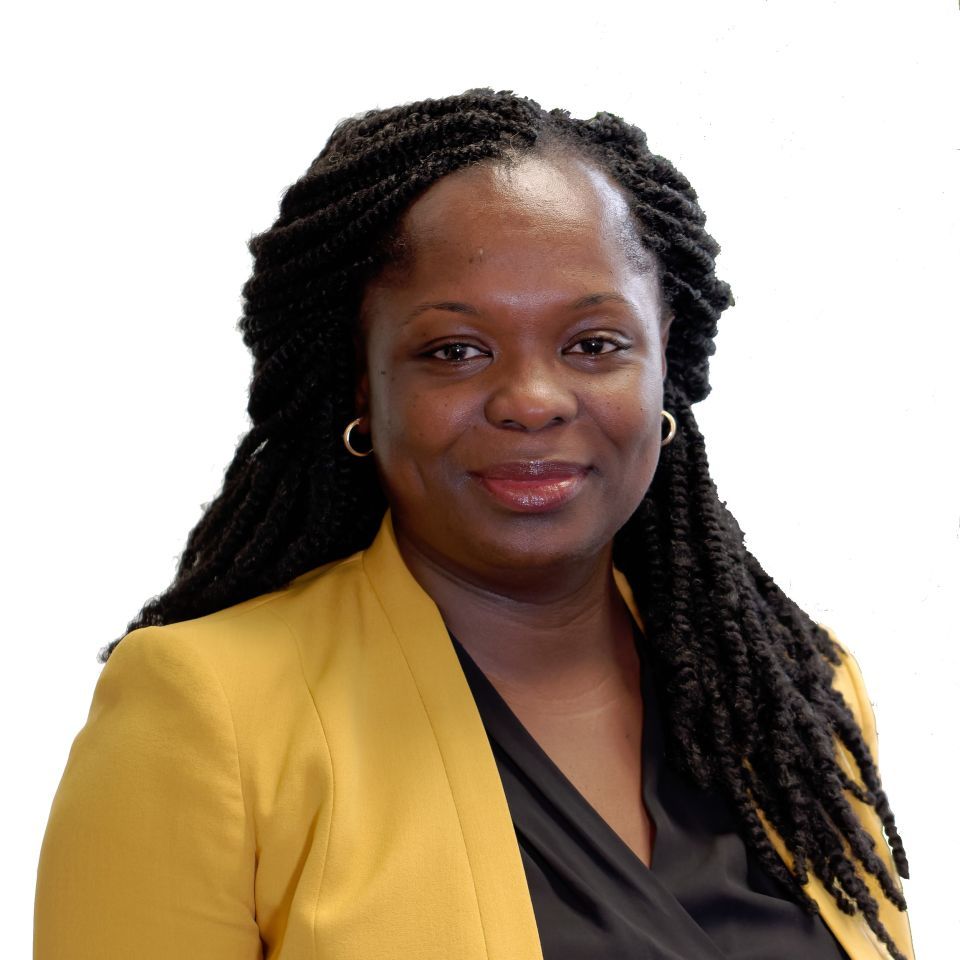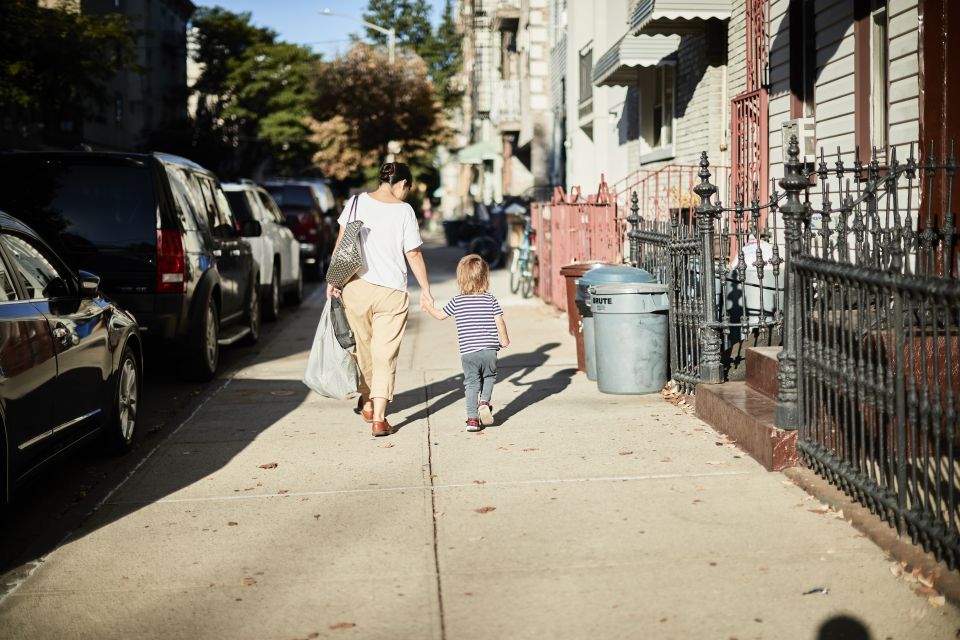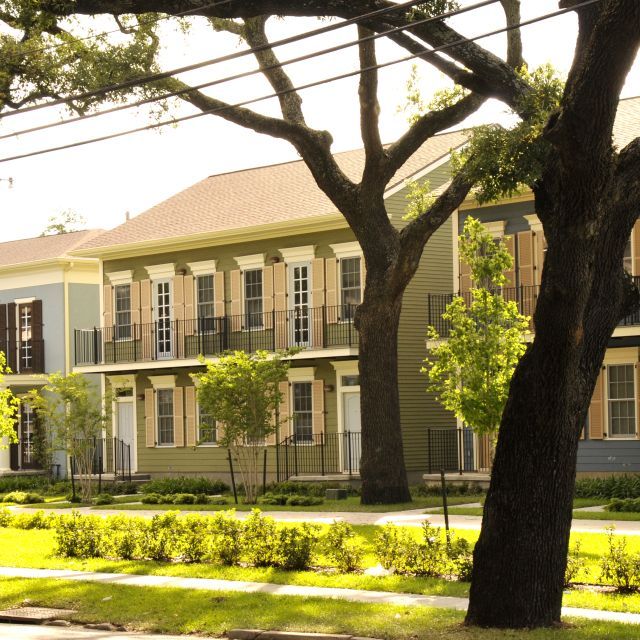From her desk at her first job, Baaba Halm saw right away the importance of having a safe and affordable place to live. As a staff attorney at Covenant House, Halm watched as young people – including young women and their children – walked by, seeking shelter and assistance. “The legal offices were literally inside the shelter, so I felt very close to the issues,” Halm said.
As Enterprise’s vice president and market leader for New York, Halm says she never forgets the people she advocated for each day in that first job, even as she now focuses on broad policy changes that aim to create more affordable homes for millions of New Yorkers.
“We need to make sure we have affordable housing for the generations to come, that we’re looking into the future, just as we’re addressing the needs of community members who urgently need housing today,” said Halm, who joined Enterprise in 2021 after serving as a legislative attorney for the New York City Council and then working for the city’s Department of Housing Preservation & Development.
Housing is a necessity just like good quality air and water.
Baaba Halm
We spoke with Halm about recent city and state-level housing proposals, ending homelessness, and how New York can serve as a model for increasing housing supply and creating more housing access.
How would you describe housing affordability overall right now in New York City and across the state?

New York has been, and still is, one of the tightest, most expensive housing markets in the U.S. And as the nation continues to recover from the Covid-19 pandemic, New York’s rent prices are continuing to increase. Households are rent challenged, and the pandemic has continued to further exacerbate housing affordability across the state.
What makes New York stand out is that it’s still a city and a state that are in demand. Our population size and the number of families and households here continue to increase. People are still coming here, but we haven't kept pace with the need for building more housing to supply the housing needs of our growing population. At the same time, we haven't seen an increase in wages.
All these outside factors and conditions make Enterprise’s work important in New York – from thinking about how to boost our housing supply, tackle some of the barriers to accessing housing, to all the challenges that limit housing opportunity.
There has been a great deal of attention on the issue of asylum-seekers and migrants who have made their way to New York City. How is that impacting New York and how is Enterprise thinking about it?
Throughout its history, New York City has always been a haven for immigrants and those coming to make a better life. That’s nothing new. What makes the current situation challenging are the faults within our immigration system. And while the arrival of large numbers of new New Yorkers has certainly required government to dedicate a lot of resources to temporary housing and caring for them, we are concerned about the negative impact on how we as a state and city view and fill housing need while dealing with other crises including growing homelessness and housing insecurity.
As part of the Family Homelessness Coalition that we co-convene, we are focused on finding ways to get people from shelter into permanent housing more quickly, freeing up space for new arrivals, and pushing back against the erosion of the right to housing, while continuing to develop innovative housing solutions for all New Yorkers.
New York City Mayor Eric Adams and Governor Kathy Hochul have both put forward plans to increase housing supply in creative ways. What are your thoughts on these plans?
Last year, the governor unveiled the housing compact – this is the first time in New York's history that we had a statewide approach to housing. It’s exciting and there’s a lot of potential here. New York City has always had a very robust housing agenda and a housing program going back a few mayors, but an overall state plan is a new story.
The governor's housing compact was innovative precisely because it calls out housing as a statewide issue.
Creating housing shouldn't just be a local priority or a local issue. We should be supporting communities across the state, and we need a state entity function to think about housing more broadly. We need affordable housing in Queens. We need affordable housing in Long Island. We need affordable housing in Binghamton.
We should really be thinking about housing on a broader level than just individual projects. We need to be asking, what is the housing that we need across the full state? What is the housing that we need across the full municipality? And not just project by project, but saying we need to tackle all the limitations that exist for creating more housing.
At Enterprise, we've been laser focused on removing exclusionary zoning practices and source-of- income discrimination, while advocating for more fair housing. We’re looking at having an impact on the broader system.
We've also been focused on working with our partners across government and the private sector and community-based partners to support their work through tax credits, loans, and grants to create more affordable housing. We will continue to do that work. The governor's proposal and the city's proposals are also important steps for us all to increase housing supply and housing access.
Is there anything missing from these plans? Any potential roadblocks for success?
These strategies and proposals can face a lot of community opposition and pushback around increasing density or allowing new housing in some communities. In truth, I don't think communities see what's in it for them.
An important part of the conversation includes making it clear how we can create more affordable housing in ways that benefit the communities that are there. People might ask: Why should I care about increasing housing if I have housing and my family has housing?
What we’re talking about is not just the need today, which is acute, but where will we be 10, 15, 20 years down the line when children – the kids that are in elementary school now – need housing? What will affordability look like for them?
That brings us to the topic of homelessness. What can be done to address the crisis and how can Enterprise help?
I believe homelessness is a problem we can solve. We’ve made progress, but obviously there's a lot that still needs to be done.
On any given night, over 90,000 people are homeless in New York City, with many sleeping on the streets, doubled up, sleeping in cars, having no place to go, maybe even sleeping on public transportation. We as a state must find the resources to support people and families. Enterprise is calling for a new statewide housing voucher program that would assist families who are homeless or at risk of homelessness. And we’re calling for an increase in the state's shelter rent threshold limit that would enable more families to find housing and to keep their housing.
Another area we’re focusing on is streamlining the process to securing shelter. There are many layers of bureaucracy - the eligibility process, the application process, the layers and layers of review and approval. Is it all necessary? What can be done more quickly to get people into housing?
We have so much technology and so many tools, yet it sometimes feels that we're back in an antiquated era. There's more that we need to do in terms moving families into available housing more quickly.

What are the biggest policy issues that are on your agenda right now, aside from advocating for the new voucher program?
We’re focused on addressing source-of-income discrimination across the state. We led a 2019 effort to ban this type of discrimination, in which landlords refuse to rent to people who pay with vouchers. We’re supporting organizations on the front lines of this issue and pushing to make sure that local community-based organizations have the resources to do this work.
So much of the work we do interfaces with racial equity and racial justice. One example is our faith-based development efforts in which we're supporting faith-based organizations to unlock the development potential of their vacant or unutilized land. Many of our partners are faith-based organizations led by BIPOC faith leaders and are working in our lower-income and disadvantaged communities.
New York has been hit hard by flooding, heat waves, and other climate-related emergencies. Can you talk about the work you are doing in New York to increase climate resiliency?
New York was impacted severely by Hurricane Sandy, by Ida last summer, and by heavy rain just recently. We’re focused on this issue and working on it in multiple ways. Last year we hosted a resilience academy in New York, bringing together partners to share best practices. We have a pilot program with the federal Department of Energy around electrification.
New York was the first Enterprise market to implement the Enterprise Green Communities criteria. And our New York office worked closely with state government to make Enterprise Green Communities criteria required by law.
We’re supporting the state's Climate Homes Funds working with partners to get them resources to do some electrification and some retrofits in their multifamily development. We just released the Green Funding and Resource Guide for Affordable Housing which is designed to inform owners about green financing tools.
How did you first get into the field of affordable housing?
It has been a long path, but I've always been involved in housing. I’m a lawyer by training, but I knew early on that I did not want to go into the transactional side of law when I graduated from law school. I went into public interest law and my first attorney role was at Covenant House in New Jersey where I worked on a range of legal issues, but all focused on helping young people who were homeless or at risk of homelessness, as well as young women and their children. It was a great opportunity to use my legal skills to have a real impact.
I moved further into the housing world when I went to work for Housing Works, which is an organization that supports people living with HIV and AIDS. This led to my work for New York City – I was an attorney for the New York City Council ultimately leading its infrastructure division. I had a big portfolio there that included housing, the public housing agency, and all economic infrastructure-related topics. After eight and a half years, I joined the New York City Department of Housing Preservation & Development working in several different roles. Coming to work at Enterprise was a natural continuation of my work and focus.
What makes you hopeful for New York given trends and the current housing crisis?
There’s just so much enthusiasm and optimism that people feel about New York and New York City. I feel that everyone is rooting for us to figure out the strategies you need to effectively tackle homelessness and to remove barriers to create more housing supply and more housing access. If we’re successful, New York can serve as a model for the rest of the country.
We’ve already made a lot of progress and Enterprise is devoting its resources to help New York get on the right track and stay on the right track. For me, it’s personal because although I wasn’t born in New York City, I’ve lived here longer than anywhere else. This is my home and I’m deeply invested in it.


